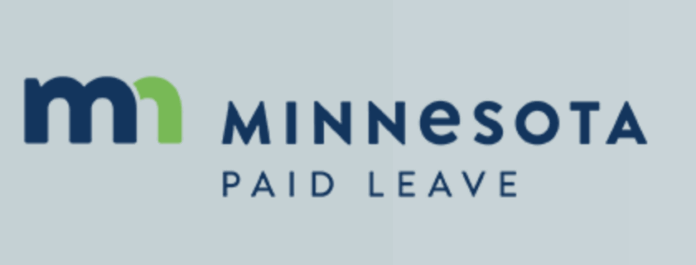By Steve Fernlund
Minnesota’s Paid Family and Medical Leave (PFML) Act is effective on January 1, 2026, just two months from now. Minnesota’s Department of Employment and Economic Development (DEED) is reminding employers of the three steps they need to take to meet their responsibilities under the PFML program. Employers must set up their Paid Leave accounts, notify employees by December 1, and take optional actions to make Paid Leave work best for their workplace.
The Minnesota Paid Family and Medical Leave law is a mandatory, state-administered insurance program providing partial wage re placement and job protection to employees who need time off work for a serious health condition or to care for a family member.
Primarily funded through a state set payroll tax premium (0.88% in 2026) that is split between employers and employees. Eligible employees can take up to 12 weeks of Medical Leave and/or 12 weeks of Family Leave for bonding with a newborn and other care-giving. If both types of leave are taken in a single benefit year, the maximum benefit is 20 weeks.
Minnesota has had unpaid parental leave laws for decades, including the 1987 Parental Leave Act. However, the move toward a com prehensive paid family and medical leave program gained momentum over recent years.
The Minnesota Legislature passed the PFML Act in May 2023, establishing the state-run insurance program. DEED then began setting up the administrative system. Employers were required to start submitting quarterly wage detail reports in late 2024 in preparation. The law is set to fully take effect on January 1, 2026, when employers and employees begin premium contributions and employees become eligible to apply for benefits.
In a recent press release, DEED wrote, “Paid Leave will offer payments and job protections to workers for some of life’s most important moments, like welcoming a child, recovering from a serious illness, or caring for a loved one. New pro gram resources will make it easier for individuals and employers to plan and prepare to take advantage of this new employment benefit.”
DEED Commissioner Matt Varilek said, “Paid Leave will help us build on Minnesota’s standing as one of the best states for children and families.”
The operational impact on small employers in rural Minnesota is expected to be particularly sharp for the hospitality and construction industries, sectors characterized by seasonal work, high turnover, and tight staffing. The payroll tax, initially 0.88%, may not seem significant. Still, since both the hospitality and construction sectors rely heavily on seasonal and temporary workers, this presents a unique compliance challenge, particularly regarding job protection.
The law grants most employees the right to be reinstated to the same or an equivalent position upon re turning from leave, provided they have worked for the employer for at least 90 days before taking leave.
While the law is broad, it includes a very narrow exemption for certain seasonal hospitality employees and employers. Specifically, the employer must be classified as a hospitality industry employer under NAICS codes. It must qualify as a seasonal business by demonstrating that its revenue is heavily weighted toward a single period of the year.
Businesses that do not meet this strict test must cover their season al staff, exposing them to the same leave and reinstatement requirements as year-round operations. The individual employee must be employed for no more than 150 calendar days during any consecutive 52-week period.
The introduction of PFML rep resents a fundamental change to Minnesota’s workforce landscape. Its proponents hail the law as a vital step for employee well-being, and businesses in industries like hospitality and construction are focused on mitigating the financial and operational challenges that will ac company the new era of mandatory paid leave.
Self-employed individuals or in dependent contractors are not automatically covered by the PFML program. You must voluntarily opt in to receive benefits. You need to apply for voluntary coverage with DEED.
Employers, employees, and the self-employed can find comprehensive details and support on the program at the official Paid Leave website. mn.gov/deed/paidleave/



